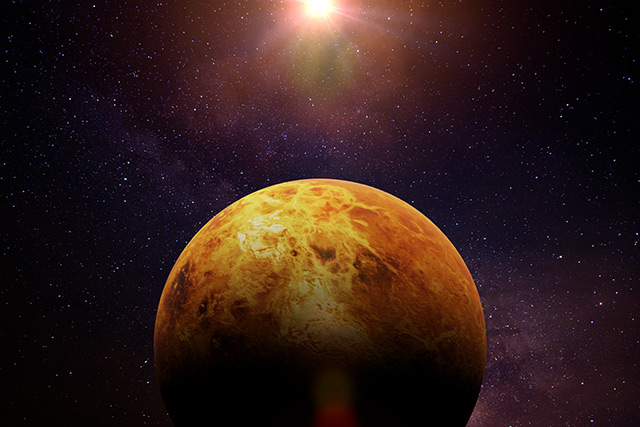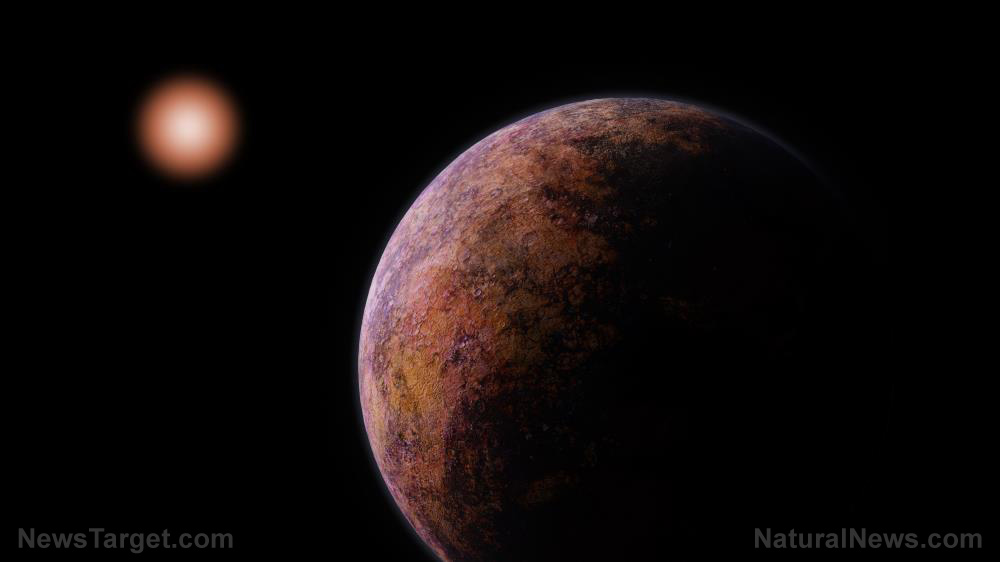
Venus may have once harbored oceans two to three billion years ago, suggests a study presented at the Joint Meeting of the European Planetary Science Congress and the American Astronomical Society’s Division for Planetary Sciences.
Researchers from the National Aeronautics and Space Administration’s (NASA) Goddard Institute for Space Studies ran five simulations of the planet’s environment based on different ocean levels and topographic factors. Each scenario showed that Venus could have maintained a stable temperature of at least 68 degrees Fahrenheit to as much as 122 degrees. These conditions, in turn, could have allowed life to emerge.
If it weren’t for the global outgassing that released great levels of carbon dioxide in the air, Venus could have a temperate planet today, said the scientists.
“Our hypothesis is that Venus may have had a stable climate for billions of years. It is possible that the near-global resurfacing event is responsible for its transformation from an Earth-like climate to the hellish hot-house we see today,” said co-author Michael Way.
Venus may have hosted oceans
While the hellish temperatures at Venus make liquid water non-existent today, the planet might have had oceans billions of years ago. This was the finding by NASA’s Pioneer Venus mission in 1978.
For the study, the researchers created different models of the planet that simulated atmospheric conditions 4.2 billion years ago, 715 million years ago and today. They also considered the gradual increase in solar radiation as the sun is warmed over the course of its lifetime.
In three of the five simulations, the topography of Venus was assumed to be similar to what it is today. The oceans ranged from a shallow depth of around 30 feet to about 1,000 feet, with a small amount of water locked in the soil.
The researchers also formulated a scenario in which the topography of Venus was similar to that of Earth -- that is, the oceans were 1,000 feet deep. Furthermore, they included a scenario in which the entire surface of Venus was covered in a 500-foot-deep ocean.
“In all the scenarios we have modeled, we have found that Venus could still support surface temperatures amenable for liquid water,” said Way.
In the simulations, Venus likely went through a period of rapid cooling soon after its formation about 4.2 billion years ago. As it evolved, silicate rocks absorbed carbon dioxide from the atmosphere and kept it locked in the planet’s crust. By 715 million years ago, Venus might have approximated the atmosphere of Earth, characterized by higher levels of nitrogen with trace amounts of carbon dioxide and methane. (Related: NASA says that aliens live on Venus, but they’re only microbes.)
Outgassing caused hellish conditions in Venus
The simulations suggested that these conditions could have remained in place if a major resurfacing event did not occur 700 million years ago. This event released great amounts of carbon dioxide in the air that could not be re-absorbed by rocks.
It’s unclear what caused this outgassing, but the researchers posited that it might be linked to volcanic activity. As magma and molten rock bubbled up to the surface, high levels of carbon dioxide were released back into the atmosphere. Magma that solidified before reaching the surface was likely unable to re-absorb carbon dioxide.
It’s also worth noting that volcanoes on Venus are bigger than those on Earth. On Venus, there are volcanic edifices that are more than 600 miles wide while the largest volcano on Earth, Mauna Loa, is about 75 miles across. There are also more volcanoes on Venus; shield types are estimated to be about 7,000 while the total of known volcanoes on Earth is in the low thousands.
The researchers said that their findings have big implications for the exoplanets found in the “Venus zone” -- the zone around a star in which the atmosphere of a planet could be pushed into runaway greenhouse conditions. Exoplanets in the Venus zone might be able to host liquid water and temperate climates, according to the authors.
Space.news has more on the search for alien life.
Sources include:
Please contact us for more information.




















